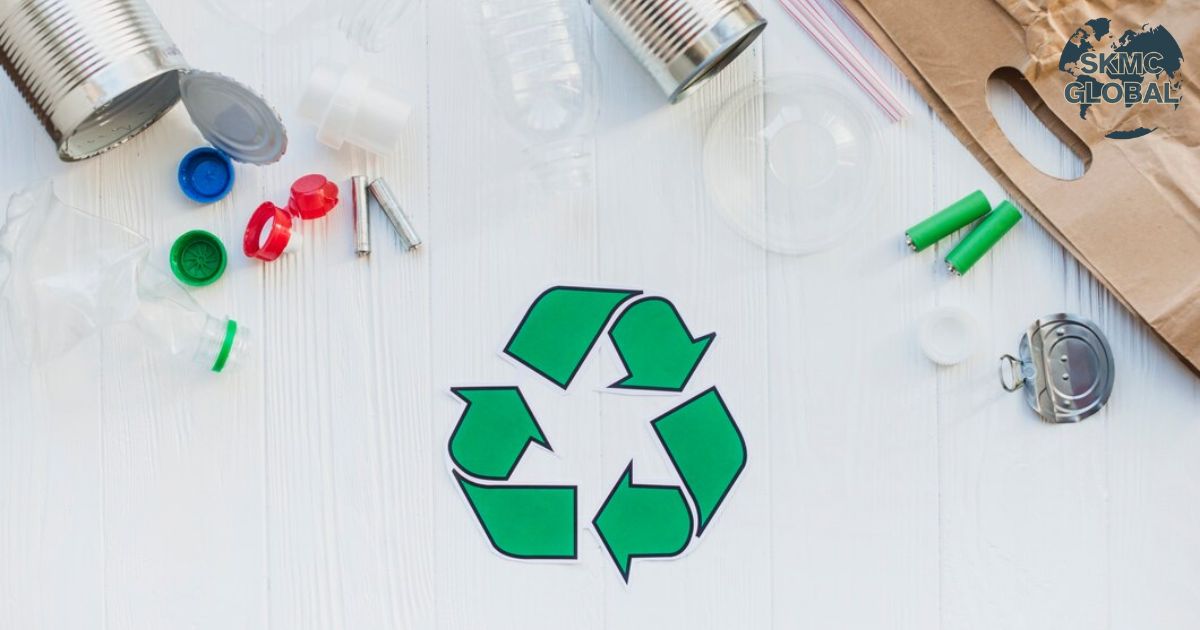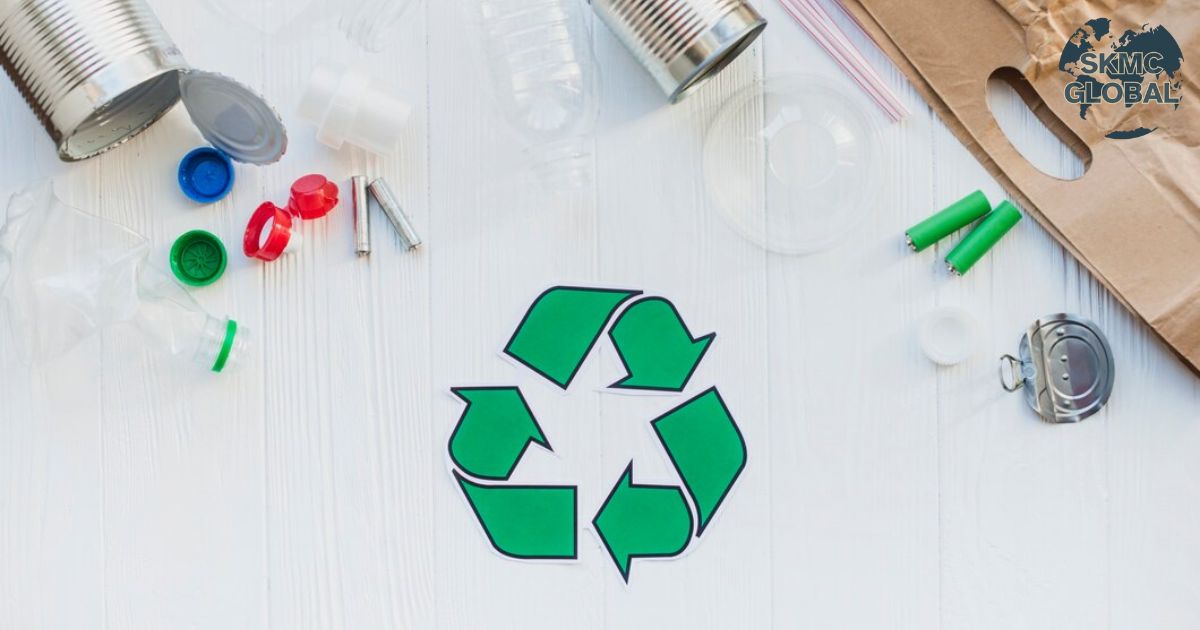
A report has been released by the United Nations University (UNU). It predicted that by 2030, 38% more e-waste would be produced. Without a question, the waste kind that is expanding the fastest is e-waste. Many factors, including the thriving IT and communication industries and the need to adopt new technology, ought to be acknowledged. As such, the growing market for electronic equipment even in the area of transports being replaced with green electronic and electronic vehicles/ e-vehicle will surely provide a favorable economic climate for the establishment of an e-waste recycling facility in the upcoming years.
Recycling e-waste aids in PIBO EPR compliance, gold recovery, and precious metal extraction. Regretfully, India does not recycle 95% of its e-waste management. As a result, the requirement for e-waste recycling and e-waste management programmes and facilities are rapdily increasing.
Despite the fact that India has more than 1800 e-waste recycling facilities. However, growth in the worldwide e-waste management industry is anticipated. The market is expected to expand between 2021 and 2028 at a 14.3% CAGR. By 2028, it will amount to $143,870 million. Consequently, the demand for additional recycling facilities rises annually. Once more, recycling should be the main focus of these operations. Additionally, the facilities need to manage their e-waste sustainably. But there's an environmentally beneficial method to achieve this.
As a result, the E-waste Management Rules 2016 were introduced by the Indian government. All the information needed to set up an e-waste recycling facility in India is included in these laws. These consist of getting an e-waste license and other things. These guidelines are updated over time, though. These are all the information you need to start an e-waste recycling business.
The 2022 E-Waste Management Rules for processing E-waste recycle in India
All recyclers will be subject to the rules. Processing and recycling must involve the recycler. These have to be e-waste, or electrical and electronic equipment (EEE). The EEE, or e-waste, is listed in Schedule I. It also covers the parts and consumables they use. Parts and spares needed to keep the product working are also supplied.
E-Waste Management Rules (EWM Rules), 2022, however, will not apply to the following:
- Micro-enterprises as defined by the Micro, Small & Medium Enterprises Development Act, 2006 (27 of 2006);
- Packaging plastics as mentioned under the Plastic Waste Management Rules, 2016;
- Waste batteries as mentioned under the Battery Waste Management Rules, 2022;
- Radioactive wastes as mentioned under the Atomic Energy Act, 1962 and rules made thereunder.
Here are some words to familiarise with before putting up E-waste technology at the recycling plant.
EEE is the acronym for E-Waste. It comprises, in whole or in part, solar photovoltaic panels, modules, or cells. These have to be thrown away as rubbish. Refurbishment, manufacturing, and repair operations must reject certain goods.
E-waste management that is environmentally sound requires taking all required precautions.
This guarantees the management of e-waste. The environment and public health are protected by this action. These are shielded from any negative consequences that may arise from e-waste.
Any producer of EEE is accountable for Extended Producer Responsibility (EPR). Schedules III and IV require the producer to satisfy recycling requirements. But you may only accomplish this through authorised e-waste recyclers in India. This ensures that such garbage is managed in an ecologically responsible manner.
According to the regulations, a recycler is any organisation or individual that deals with the reprocessing and recycling of waste electrical and electronic equipment (WEEE). It also comprises WEEE assemblies, parts, and components. Precious and semi-precious metals are recovered in this way. The list includes rare earth elements and other valuable, recoverable materials. These help to reinforce the secondary sourced materials. Also, the registered recycler must have facilities as stated in the Central Pollution Control Board (CPCB) rules a pollution NOC.
Finally, a facility is any place where specific operations are performed. It covers the receiving, gathering, and storing of e-waste. This location also handles the recycling, segregation, and rehabilitation of e-waste. Include the handling and getting rid of e-waste.
Responsibilities of the recycler
The requirements for all recyclers are as follows:
- They must establish partnerships with producers, importers, and brand owners (PIBOs);
- They must collect e-waste from manufacturers on a quarterly or monthly basis;
- They must register on the portal;
- They must ensure that any material or fractions not recycled in their e-waste recycling plant are sent to the appropriate registered recyclers;
- They must ensure that the recycling processes and facility meet the rules and regulations set forth by the State Pollution Control Board (SPCB) and the Central Pollution Control Board (CPCB);
- They must keep a record of all recycled material that is sent to registered recyclers on the portal and make all records available for audit or verification upon request;
- Make sure that residue produced during the recycling process is disposed of in an authorised TSDF (treatment storage disposal facility);
- Submit quarterly or yearly returns on the portal using the designated form by the end of the month that follows the quarter or year that the return refers to;
- Raise awareness through media, publications, commercials, posters, and other means of communication;
- Obtain WEEE or components not included in Schedule-I for recycling, provided they don't contain radioactive material, and submit them to the portal; provide an explanation and upload any information regarding the quantity of non-recyclable e-waste that is not disposed of or recycled;
- Request assistance from dismantlers in order to recycle: Ensuring appropriate material flow to and from the dismantlers is the responsibility of the recycler. Furthermore, only authorized recyclers may receive the materials that the dismantler has disassembled. Moreover, he ought to keep a record of the same;
- Solar PV panel, module, or cell recyclers are required to recover materials in accordance with the CPCB's determination in this regard;
- It is important to remember that the Environment (Protection) Act, 1986, its corresponding regulations on unregistered recyclers, and any unit that helps the SPCB violate the EWM Rules, 2022, with the CPCB's prior approval and following the boards' published guidelines, allow for the imposition of financial penalties or environmental compensation;
- Should an accident occur during the transit of e-waste or at the facility processing e-waste, one must follow Standard Operating Procedures (SOPs) and norms for recycling and disposal of e-waste under these laws published by CPCB. In that scenario, the recycler is required to notify the relevant SPCB of the accident by phone and email right away.
Protocol for storing electronic trash (e-waste)
The e-waste must be stored by all recyclers for a maximum of six months. They are required to keep a log of all e-waste transfers, sales, and storage, and to make these logs accessible for inspection. Considering this, the CPCB may prolong the specified time by up to a year if the e-waste has to be carefully stored in order to create a procedure for its recycling or reuse. Creation of Extended Producer Responsibility Recycling Certificates through the portal, the CPCB creates an EPR certificate in the designated recycler's name using a predetermined format.
The formula that determines the quantity eligible for the issuance of an extended producer responsibility (EPR) certificate:
QEPR = Cf x Qp
QEPR = stands for quantity eligible for certificate generation.
Cf = conversion factor, which is the amount of inputs required to produce one unit of output (to be decided by CPCB with steering committee permission).
Qp is the final product's quantity.
Each extended producer responsibility certificate will carry a unique number mentioning the code of the end product, the year of generation, a unique code, and a recycler code.
Auditing and Verification
Periodic audits and sporadic inspections are required by the CPCB, via an authorised agency or on its own, to confirm recycler compliance with EWM regulations.
License Required for E-waste recycle in India
To obtain e-waste for recycling from manufacturing facilities, corporations, businesses, and IT organisations, a license is necessary.
To participate in MSTC auctions and obtain e-waste for recycling from PSUs like BHEL and Indian Railways, one must have an e-waste licence licence.
Procedure for grant of registration for E-waste recycle in India
- To be granted registration for E-waste recycle in India, each recycler of e-waste must submit an application in Form-4, in triplicate, to the SPCB within three months. The application must include a copy of each of the following documents:
- The certification of registration issued by the District Industries Centre (DIC) or any other government body authorized in this regard; the CTE provided by the SPCB under the Air (Prevention & Control of Pollution) Act, 1981 & the Water (Prevention & Control of Pollution) Act, 1974;
- E-waste passbook;
- evidence of installed plant and machinery capacity provided by the DIC or another authorized government body;
- Details of Occupational safety and health aspects;
- Details of e-waste suggested to be procured from reprocessing;
- Copy agreement with a producer;
- Pollution NOC;
- Copy of agreement with Collection Centre;
- TSDF Facility Service Authorisation;
- Fire NOC;
- Factory's licence;
- Details of storage for dismantled e-waste;
- Udyam Registration Certificate;
- CTO;
- Details of facilities for recycling;
- Copy of agreement with recycler;
- Hazardous Waste Authorisation;
- Details of storage for raw & recovered materials; and
- Register at the Udyog Aadhaar MSME
- Upon receiving a complete application, the SPCB will verify that the applicant has the necessary facilities, technical know-how, and equipment to process and recycle e-waste while utilising environmentally sound technologies. Based on these findings, the applicant may be granted registration, subject to the conditions specified in the application that are deemed necessary for carrying out safe operations at the authorised location only.
- Following a reasonable opportunity for the applicant to be heard by order, the SPCB reserves the right to refuse to award the E-waste licence.
- After giving the recycler an opportunity to be heard and documenting the reasons for the suspension or cancellation, the State Pollution Control Board may suspend or revoke the e-waste registration that has been granted if it has reasonable grounds to believe that the registered recycler has violated any Act norms, rules, or registration requirements.
- The recycler is required to keep track of the e-waste that is bought and processed. In addition, the recycler needs to provide yearly reports detailing its operations from the previous year. To file the returns, use Form 3.
Recent Posts
-
 Capital Structure & its Impact on Profitability...
Feb 21,2025
Capital Structure & its Impact on Profitability...
Feb 21,2025
-
 Union Budget 2025...
Feb 01,2025
Union Budget 2025...
Feb 01,2025
-
 What is EPR in Plastic waste Management? ...
Jul 12,2022
What is EPR in Plastic waste Management? ...
Jul 12,2022
-
 Lithium-ion Battery Recycling Plant Setup in India...
May 10,2022
Lithium-ion Battery Recycling Plant Setup in India...
May 10,2022
-
 FLA Return and its compliance...
Feb 08,2022
FLA Return and its compliance...
Feb 08,2022
-
 Setting up E-waste Recycling Plant Setup...
Jan 12,2022
Setting up E-waste Recycling Plant Setup...
Jan 12,2022
-
 Process of closure of Branch office in India...
Dec 30,2021
Process of closure of Branch office in India...
Dec 30,2021
-
 Steps to Shut down the Liaison Office in India...
Sep 14,2021
Steps to Shut down the Liaison Office in India...
Sep 14,2021
-
 Procedure for closure of Project Office in India...
Aug 10,2021
Procedure for closure of Project Office in India...
Aug 10,2021
-
 Applicability of Labour Laws in India...
Jul 15,2021
Applicability of Labour Laws in India...
Jul 15,2021
-
 Basis to Outsource Finance and Accounting Services...
Oct 31,2021
Basis to Outsource Finance and Accounting Services...
Oct 31,2021
